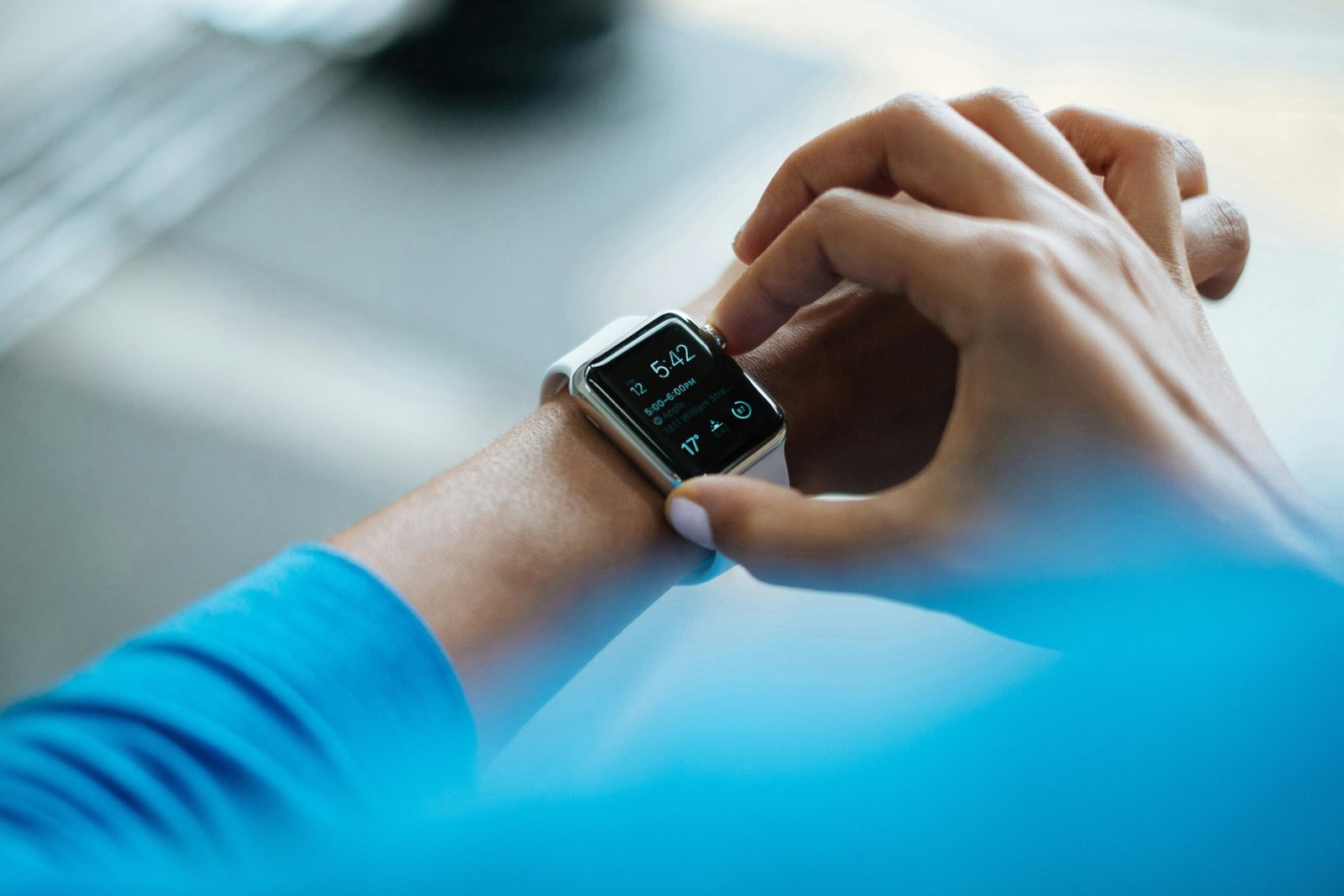

Introduction to Biohacking
Biohacking, a term that fuses biology and hacking, refers to the practice of exploiting science, biology, and self-experimentation to optimize physical and mental performance. Fundamentally, biohacking encompasses a wide spectrum of activities ranging from simple lifestyle changes like diet and exercise modifications to more complex interventions involving technology and biomedical devices.
At its core, biohacking aims to push the boundaries of human capabilities. This can mean anything from enhancing cognitive function and physical strength to prolonging lifespan. The biohacking movement traces its origins back to the do-it-yourself (DIY) bio community, where individuals, often outside traditional scientific institutions, began experimenting with genetic engineering and digital tracking technologies to improve various aspects of the human condition.
One of the pivotal moments in the history of biohacking occurred with the advent of DIY genetic engineering kits, which made it possible for enthusiasts to conduct genetic experiments from their homes. This democratization of science empowered many to delve deeper into personal biological enhancement. Influential figures, such as Tim Ferriss, author of “The 4-Hour Body,” and Dave Asprey, founder of Bulletproof Coffee, have championed the movement by popularizing techniques like intermittent fasting and nootropic usage, bringing biohacking to mainstream attention.
Another significant milestone was the establishment of biohacking labs and communities—spaces where biohackers could collaborate and share knowledge. Magnetic implants and RFID (Radio Frequency Identification) chips, which enable enhancements like the ability to unlock doors with a wave of the hand, illustrate the fusion of technology with biology that lies at the heart of biohacking. These communities have become a breeding ground for innovative approaches to human enhancement, fostering a culture rooted in scientific inquiry and radical self-improvement.
As biohacking continues to evolve, it promises to reshape conventional understanding of human limits, marrying technological advancements with biological sciences to chart new possibilities for human enhancement.
Types of Biohacking
Biohacking encompasses a range of practices aimed at optimizing human performance through technological and biological means. Among the most prevalent forms of biohacking are DIY biology, nutritional biohacking, nootropics, and wearable technology. Each of these approaches offers unique methods and tools for individuals to enhance their physical and cognitive wellbeing.
DIY biology, often referred to as “garage biology,” involves amateur biologists conducting experiments and modifications outside traditional lab environments. Enthusiasts engage in gene editing, create new biological materials, or even develop novel pharmaceuticals. This grassroots movement has garnered attention for its potential to democratize science, though it also raises ethical and safety concerns.
Nutritional biohacking focuses on optimizing diet to achieve specific health outcomes. This practice includes tailored meal plans, supplements, and intermittent fasting. By understanding how different nutrients affect bodily functions, individuals aim to enhance energy levels, mental clarity, and longevity. Nutritional biohacking is widely endorsed for its accessibility and the tangible benefits reported by practitioners.
Nootropics, or “smart drugs,” are substances claimed to improve cognitive function, particularly executive functions, memory, creativity, or motivation. These can be natural or synthetic, ranging from caffeine and L-theanine to more potent compounds like modafinil and racetams. The nootropics community is driven by the desire for enhanced mental acuity and productivity, though the long-term safety of some substances remains under study.
Wearable technology represents one of the most mainstream forms of biohacking. Devices like fitness trackers, smartwatches, and sleep monitors provide real-time data about various physiological metrics. This continuous feedback allows users to make informed decisions about their health and habits, fostering a proactive approach to wellness. The wearables market has grown substantially, reflecting the public’s increasing interest in data-driven self-improvement.
These types of biohacking reflect diverse motivations—from achieving peak mental performance to gaining deeper insights into one’s biological processes. While the impact of each varies, collectively they underscore a broader cultural shift toward personal agency in health and wellness.
Key Technologies in Biohacking
Biohacking has leveraged cutting-edge technologies to push the boundaries of human enhancement. Among the most significant advancements is CRISPR gene editing, a groundbreaking tool that allows scientists to make precise alterations to DNA. By targeting specific genes, CRISPR can potentially cure genetic disorders, improve physical abilities, and even extend lifespan. This revolutionary technique holds promise for personalized medicine, wherein treatments are tailored to an individual’s genetic makeup.
Bioinformatics is another cornerstone of biohacking, merging biology and data analysis to understand complex biological data. By applying algorithms and software tools, bioinformatics can identify genetic markers for diseases and predict how different treatments will interact with a person’s genetic profile. This technology is crucial in genomics research and developing advanced therapies, enhancing our ability to prevent and treat various conditions.
Implantable devices are also at the forefront of biohacking, with innovations like microchips that can monitor vital signs, process biometric data, and communicate with other devices. These implants have significant implications for health monitoring, allowing for the continuous collection of data that can alert users to potential health issues before they become critical. The fusion of biotechnology and electronics in these devices aims to provide seamless, real-time health management.
Continuous glucose monitors (CGMs) exemplify how biohacking can improve chronic disease management. CGMs track glucose levels in real-time, providing critical insights for individuals with diabetes. These devices help maintain optimal blood sugar levels, reducing the risk of complications and enhancing overall quality of life. They represent the broader trend of integrating biohacking technologies into everyday health practices, offering users greater control over their well-being.
Recent innovations continue to propel biohacking forward. Advances in nanotechnology, for instance, could lead to the development of microscopic devices capable of repairing cellular damage or delivering drugs with pinpoint accuracy. The future of biohacking promises even greater integration of technology and biology, paving the way for unprecedented enhancements in human health and performance.
Ethical and Legal Considerations
Biohacking, the practice of using science and technology to enhance human capabilities, raises profound ethical and legal questions. One of the primary concerns revolves around privacy. With biohacking technologies such as genetic modifications and implantable devices, there is a significant risk of personal information being misused. Unauthorized access to an individual’s biological data could lead to severe privacy violations and potential discrimination.
Safety also emerges as a critical issue. Biohackers often operate outside traditional medical frameworks, experimenting with unregulated and sometimes untested methods. This lack of oversight can lead to unintended consequences, including harmful side effects or long-term health risks. As the technology progresses, there is an urgent need to establish robust safety standards to protect individuals engaging in these practices.
Another contentious issue is the potential for biological inequality. Biohacking could exacerbate existing social disparities if only affluent individuals can afford cutting-edge enhancements. This could create a divided society where enhanced individuals have an unfair advantage, potentially widening gaps in opportunities and overall quality of life. Addressing this concern requires careful consideration of access and affordability of these technologies to ensure equitable distribution of benefits.
The current regulatory landscape for biohacking is fragmented and often inadequate, posing challenges for both innovation and protection. Efforts are being made to strike a balance between encouraging scientific advancement and ensuring public safety. Regulatory bodies are beginning to draft guidelines that aim to oversee biohacking practices without stifling creativity or slowing progress. These efforts include establishing clear definitions of biohacking activities, setting ethical guidelines, and creating frameworks for informed consent.
As biohacking continues to evolve, it will be crucial for policymakers, scientists, and the public to engage in ongoing dialogue to address these ethical and legal challenges. Developing a balanced approach to regulation can foster an environment where innovation thrives while protecting individual rights and societal interests.
Biohacking and Health Optimization
Biohacking, often referred to as DIY biology, represents a paradigm shift in how individuals can proactively manage and enhance their health through the use of technology and science. Central to this approach are practices aimed at personalized nutrition, which tailors dietary intake to an individual’s genetic makeup, lifestyle, and specific health goals. Advances in genomics and metabolomics have significantly contributed to this personalized approach, allowing biohackers to optimize their diet more effectively.
Exercise optimization also plays a crucial role in biohacking for health. Contrary to traditional exercise regimens, biohackers use data-driven insights to create customized workout plans that maximize efficiency and results. Wearable technology, such as fitness trackers and heart rate monitors, provide real-time feedback and collect data that can refine these plans continuously.
Another pivotal aspect of biohacking is sleep optimization. Understanding that quality sleep is essential for overall health, biohackers employ various strategies to enhance sleep patterns. These may include the use of blue-light blocking glasses to reduce exposure to screens, sleep tracking devices to monitor sleep cycles, and adjusting variables such as room temperature and ambient light to create an optimal sleep environment.
Mindfulness and stress reduction techniques also feature prominently in the biohacker’s tool kit. Practices such as meditation, deep breathing exercises, and even neurofeedback are utilized to improve mental clarity, reduce stress, and enhance overall well-being. Scientific studies have shown the efficacy of these techniques in promoting mental health, further substantiating their value.
Success stories abound, with many individuals reporting significant health benefits from these biohacking practices. However, it is important to note that the scientific community remains divided on certain aspects, with some experts expressing concerns over the potential risks and ethical implications associated with biohacking. Nonetheless, as the field continues to evolve, the intersection of technology and human enhancement promises to offer valuable insights into optimizing health and well-being.
The Role of Community and Collaboration
Biohacking, an evolving intersection of technology and human enhancement, thrives on the spirit of community and collaboration. The movement, characterized by its DIY ethos and open-source mentality, emphasizes the sharing of knowledge and resources among biohackers. This collaborative environment nurtures innovation and fosters a network of support, enabling biohackers to exchange ideas, troubleshoot issues, and advance the frontiers of human enhancement.
Central to this collaborative spirit are online forums and social media groups, which serve as digital hubs where biohackers congregate to discuss projects, share experimental results, and seek advice. Websites like Reddit, Biohack.me, and DIYbio.org are instrumental in bringing together individuals with a shared interest in biohacking. These platforms not only facilitate the exchange of information but also democratize access to cutting-edge techniques and technologies, enabling even those with limited resources to participate in the biohacking movement.
Physical gatherings also play a crucial role in fostering collaboration within the biohacking community. Conferences such as BodyHacking Con and the Biohacking Congress provide opportunities for biohackers to connect, share their work, and learn from prominent figures in the field. These events, along with local meet-ups and workshops, help to build a sense of camaraderie and mutual support, further unifying the community.
Key organizations and influential figures have been instrumental in nurturing this collaborative spirit. The Open Bioinformatics Foundation and the International Genetically Engineered Machine (iGEM) competition are notable examples of organizations that promote open collaboration and innovation in biohacking. Influential figures such as Dave Asprey of Bulletproof fame and Dr. Josiah Zayner, known for his work with CRISPR, inspire and mentor others within the community, pushing the boundaries of what is possible.
In conclusion, the biohacking movement owes much of its progress and dynamism to the strong sense of community and collaboration that underpins it. Through online forums, conferences, local meet-ups, and the work of key organizations and figures, biohackers continue to drive innovation, support each other, and expand the horizons of human enhancement.
Case Studies and Real-World Applications
Biohacking has transcended theoretical discussions to become a practical approach for enhancing human capabilities. One of the most renowned cases is that of Dave Asprey, the founder of Bulletproof. Asprey applied a combination of dietary modifications, supplementation, and wearable technology, ultimately achieving significant improvements in his cognitive function and overall health. His approach emphasized the synergy between personalized nutrition and digital health monitoring tools, illustrating how biohacking can be tailored to individual needs.
In the realm of biohacking, the company Neuralink, co-founded by Elon Musk, exemplifies the use of cutting-edge technology to push the boundaries of human enhancement. Neuralink is developing implantable brain-computer interfaces (BCIs) designed to bridge the gap between human cognition and artificial intelligence. By enabling direct communication between the brain and external devices, this technology promises revolutionary advancements in medical treatment for neurological disorders, as well as potential applications in enhancing cognitive abilities.
Emerging stories in biohacking are equally compelling. The case of Amal Graafstra, a pioneer in the field of biohacking, highlights the diverse applications of RFID (Radio-Frequency Identification) implants. By embedding microchips into his hands, Graafstra has demonstrated how biohacking can facilitate seamless interactions with electronic systems, from unlocking doors to accessing computer systems without passwords. This real-world application showcases the practical benefits of integrating human biology with technology.
Another fascinating example is the work of the OpenBCI community, which focuses on democratizing access to brain-computer interface technology. By creating open-source platforms, OpenBCI enables individuals to conduct personal experiments in neurofeedback and brainwave stimulation. This grassroots approach to biohacking has paved the way for hobbyists and researchers alike to explore the potential of biohacking at a relatively low cost, fostering innovation and widespread accessibility.
These case studies illustrate the diverse applications of biohacking, from professional endeavors to community-driven initiatives. The ongoing advancements in biohacking technology and practices continue to reshape our understanding of human enhancement, offering transformative possibilities for health and cognitive performance.
Future Trends and Predictions
As we venture into the realm of biohacking, the horizon is laden with transformative technologies and innovations that promise to redefine human enhancement. With the rapid convergence of biotechnology, artificial intelligence, and data analytics, the future of biohacking is poised to deliver unprecedented advancements. Notably, the emergence of CRISPR gene editing presents an avenue for precise genetic modifications, offering potential cures for genetic disorders and optimizations for human health and performance.
In addition, the field of neurotechnology is witnessing groundbreaking developments with brain-computer interfaces (BCIs). These innovations aim to create seamless communication between the human brain and computers, enabling enhanced cognitive abilities, memory augmentation, and even the restoration of lost functions in individuals with neurological impairments. As research progresses, biohackers and scientists alike anticipate a future where integrating wearable technology with BCIs could become commonplace, further blurring the lines between human and machine.
Another compelling area to watch is personalized medicine. With advances in genomics and data science, the personalization of healthcare is set to reach new heights. By leveraging individual genetic profiles, biohackers could tailor health interventions and preventative measures to align with each person’s unique biological blueprint. This bespoke approach not only promises more effective treatments but also represents a significant shift towards proactive rather than reactive healthcare.
The societal impacts of these advancements are far-reaching. On one hand, biohacking holds the potential to democratize access to health solutions and empower individuals to take control of their well-being. On the other hand, it also raises ethical concerns regarding equity, privacy, and the potential misuse of technology. As expert predictions suggest, the governance frameworks and regulatory landscapes will need to evolve in tandem with the technological progress to mitigate these risks.
In essence, the trajectory of biohacking is one of both incredible promise and intricate challenges. As we stand on the cusp of this new era, it becomes imperative for stakeholders, including scientists, policymakers, and the public, to engage in a balanced discourse to navigate the profound transformative benefits and unforeseen challenges that lie ahead.




